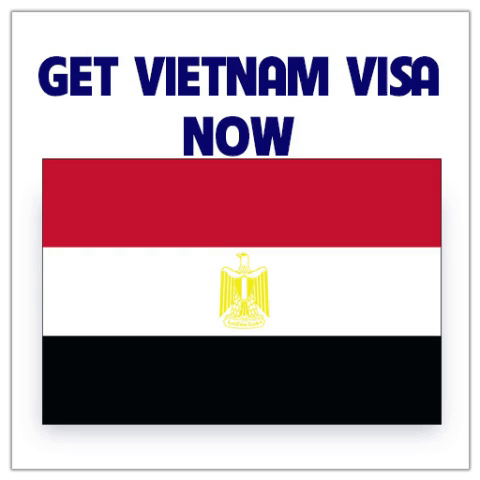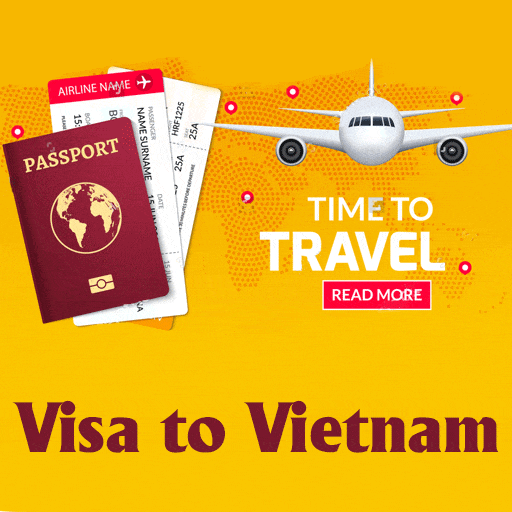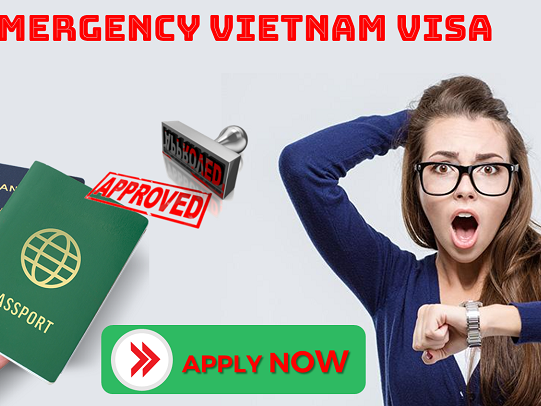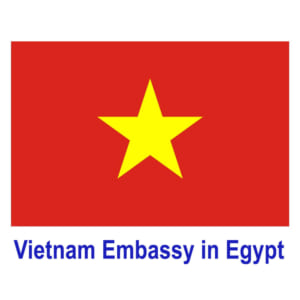When planning a trip to Vietnam, understanding the Required Documents for a Vietnamese Tourist Visa is essential for a smooth application process. This guide delves into the specifics, helping travelers navigate the requirements with ease and confidence. By preparing the necessary paperwork in advance, you can avoid delays and focus on the excitement of exploring Vietnam’s vibrant culture, stunning landscapes, and rich history.
Introduction: Understanding Vietnamese Tourist Visa Requirements

Navigating the world of visa applications can be daunting, especially for first-time travelers to Vietnam. The Required Documents for a Vietnamese Tourist Visa form the backbone of your application, ensuring that immigration authorities can verify your identity, purpose of travel, and compliance with regulations. This section sets the stage by exploring the overarching importance of these documents, highlighting how they serve as a gateway to your Vietnamese adventure. Without a thorough grasp of these requirements, applicants risk rejection or unnecessary complications, so it’s crucial to approach the process with diligence and attention to detail.
The Historical Context of Vietnamese Visa Policies
Vietnam’s visa system has evolved significantly since the country’s doi moi reforms in the 1980s, which opened its doors to international tourism. Today, the Required Documents for a Vietnamese Tourist Visa reflect a balance between security measures and tourism promotion. Historically, Vietnam maintained strict entry controls due to its geopolitical context, but recent policies aim to simplify processes for tourists. From a personal analysis perspective, this evolution underscores Vietnam’s strategic shift towards economic growth through tourism, making document preparation not just a bureaucratic hurdle but a key to unlocking cultural exchange. For instance, the emphasis on proof of onward travel and accommodation demonstrates the government’s intent to ensure visitors are genuine tourists rather than long-term stayers.
In practice, understanding this historical backdrop can help applicants appreciate why certain documents, like a valid passport, are non-negotiable. I find it fascinating how these requirements adapt to global trends, such as post-pandemic health protocols that might indirectly influence document needs. By viewing the application as part of a larger narrative of international relations, travelers can approach it with greater empathy and preparedness. Ultimately, this context encourages a proactive mindset, where gathering documents becomes an integral part of trip planning rather than a last-minute chore.
Common Challenges in Document Preparation
One of the most frequent hurdles in securing a Vietnamese tourist visa is the misalignment between an applicant’s documents and the official guidelines. The Required Documents for a Vietnamese Tourist Visa must be precise and up-to-date, yet many overlook subtle details like photo specifications or itinerary formats. From my insights, this often stems from a lack of awareness about Vietnam’s specific rules, which differ from those of other countries. For example, while some nations accept digital submissions for everything, Vietnam may require original hard copies, adding an extra layer of complexity.
Delving deeper, personal analysis reveals that challenges are exacerbated by language barriers, as forms and instructions are primarily in Vietnamese or English. Travelers from non-English speaking countries might struggle with translations, leading to errors that could delay approval. To counter this, I recommend using professional visa services or translation tools early in the process. Moreover, the psychological aspect shouldn’t be ignored; the stress of potential rejection can deter travelers, but viewing document preparation as an educational opportunity—perhaps learning about Vietnam’s consular services—can transform it into a positive experience. In essence, anticipating these challenges allows for a more streamlined application.
Tips for a Successful Application Process
To streamline your visa application, start by organizing the Required Documents for a Vietnamese Tourist Visa well in advance of your travel date. A creative insight here is to treat the process like packing for a trip: categorize documents into essentials (like passport and photos) and supporting items (such as itineraries). This methodical approach not only reduces stress but also minimizes the risk of omissions. Personally, I analyze that successful applicants often leverage online resources, such as the Vietnamese government’s official website, to cross-reference requirements and stay updated on any changes.
Further, engaging with travel communities or forums can provide invaluable peer insights. For instance, reading about others’ experiences with visa approvals can highlight best practices, like ensuring your passport has at least six months’ validity beyond your entry date. I believe this communal knowledge-sharing fosters a sense of global camaraderie among travelers. Finally, always double-check for authenticity; forged documents can lead to severe consequences, so prioritize originality. By adopting these tips, you’ll not only meet the requirements but also enhance your overall travel preparedness.
The Role of Technology in Modern Visa Applications
In today’s digital age, technology plays a pivotal role in simplifying the Required Documents for a Vietnamese Tourist Visa. Innovations like online application portals have reduced the need for in-person visits, allowing applicants to upload scanned documents from anywhere. From a personal viewpoint, this shift represents a progressive step for Vietnam, aligning with global trends towards efficiency and sustainability. However, it’s not without challenges; digital submissions must still adhere to strict formats, and technical glitches can complicate the process.
Analyzing this further, I see technology as a double-edged sword: it accelerates approvals but demands digital literacy. For example, using apps for document scanning and verification can save time, yet not all travelers are tech-savvy. A creative insight is to integrate tools like AI-powered checklists that remind users of specific requirements, such as photo dimensions. Ultimately, embracing technology while maintaining a backup plan for traditional methods ensures a robust application strategy. This blend of old and new approaches reflects Vietnam’s adaptive visa policies, making the process more accessible for diverse applicants.
Valid Passport: A Cornerstone Requirement

A valid passport stands as the foundational element in the Required Documents for a Vietnamese Tourist Visa, serving as your primary identification and proof of citizenship. Without it, no other documents matter, as it’s the key that unlocks the entire application process. This requirement not only ensures legal entry but also reflects international standards for secure travel. In this section, we’ll explore the nuances of passport validity, its implications, and how to handle common issues, providing a comprehensive guide for travelers.
Understanding Passport Validity and Duration
Passport validity is more than just a date stamp; it’s a critical factor that determines your eligibility for a Vietnamese tourist visa. Generally, your passport must be valid for at least six months beyond your planned departure from Vietnam, a rule common in many countries to prevent travelers from overstaying. This stipulation arises from international agreements aimed at maintaining border security and orderly migration.
From a personal analysis, this requirement highlights the interconnectedness of global travel policies. For instance, if your passport is nearing expiration, renewing it early can avoid last-minute rushes and potential visa denials. I find it intriguing how this rule encourages proactive planning, turning what might seem like a mundane check into a lesson in foresight. Moreover, for frequent travelers, maintaining multiple entries or extending validity through renewals can streamline future trips, emphasizing the passport’s role as a lifelong travel asset.
In practice, overlooking this can lead to unexpected complications, such as being turned away at the airport. Therefore, always verify your passport’s expiration against your itinerary. A creative insight is to use digital tools like passport validity apps that sync with your travel plans, providing reminders and alerts. By prioritizing this, applicants not only comply with requirements but also safeguard their travel dreams.
Types of Passports and Their Acceptance
Not all passports are created equal when it comes to Vietnamese visa applications; the type you hold can influence the process. Standard tourist passports are universally accepted, but diplomatic or official passports might have different rules, often exempting holders from certain requirements. For most leisure travelers, a regular passport suffices, but understanding the distinctions is key.
Personally, I analyze that this differentiation reflects Vietnam’s diplomatic relations and security protocols. Countries with visa waiver agreements, like those in ASEAN, might have simplified processes, but for others, providing additional documents becomes necessary. A deeper insight is how this system promotes international diplomacy; for example, holders of passports from countries with strong ties to Vietnam may experience faster processing. This can be a strategic advantage for travelers from allied nations.
To navigate this, research your passport’s status via official channels. If you’re a dual citizen, decide which passport to use based on visa reciprocity. I recommend documenting any endorsements or visas from previous trips, as they can bolster your application. Ultimately, knowing your passport type enhances your preparation, ensuring a seamless entry into Vietnam’s welcoming borders.
Renewing or Replacing a Passport
If your passport is expired or damaged, renewing or replacing it is a non-negotiable step before applying for a Vietnamese tourist visa. The process varies by country but typically involves submitting an application, photos, and fees to your government’s passport office. In the U.S., for example, this can be done online or in person, with processing times ranging from weeks to months.
From my perspective, this requirement underscores the importance of contingency planning in travel. I creatively analyze that viewing passport renewal as an opportunity for reflection—perhaps updating your personal details or reflecting on past travels—can make the process more engaging. Common issues like lost passports add urgency, so always keep backups or digital copies.
Moreover, for those in a time crunch, expedited services exist, though at a higher cost. A practical tip is to align your renewal with your visa timeline, ensuring you have the valid document in hand. By addressing this early, travelers can avoid the stress of incomplete applications and focus on the joys of their upcoming Vietnamese escapade.
The Impact of Passport Stamps and Annotations
Every stamp or annotation in your passport tells a story, and for Vietnamese visa purposes, they can either help or hinder your application. Immigration officials scrutinize these for signs of previous travels, potential overstays, or security concerns, making your passport a comprehensive travel diary.
I personally find this aspect fascinating, as it reveals how past actions influence future opportunities. For instance, stamps from countries with tense relations to Vietnam might warrant extra scrutiny, while clean records expedite approvals. A creative insight is to use this as a learning tool: maintaining a travel journal alongside your passport can help you anticipate questions and prepare explanations.
In analyzing global trends, I note that digital passports with embedded chips are becoming standard, potentially streamlining future verifications. However, for now, ensuring your passport is free of damage and accurately reflects your history is crucial. By managing these elements wisely, applicants can present a passport that not only meets the Required Documents for a Vietnamese Tourist Visa but also paints a positive picture of their travel ethos.
Application Form Completion: Accuracy is Key

Completing the application form accurately is a pivotal step in the Required Documents for a Vietnamese Tourist Visa process, as even minor errors can lead to rejection. This form serves as your formal declaration of intent, capturing essential details that align with your travel plans. Beyond mere paperwork, it’s an opportunity to demonstrate your sincerity and preparedness, making precision paramount.
Filling Out the Form: Step-by-Step Guidance
The Vietnamese tourist visa application form is straightforward but demands careful attention to detail. Start by downloading the latest version from the official website, ensuring you have the correct form for your nationality and visa type.
When filling it out, use clear, legible handwriting or type if submitting digitally, and double-check for spelling errors in names and addresses. From a personal analysis, I see this as a reflection of your respect for the process; inaccuracies can signal carelessness, potentially delaying your visa.
Moreover, provide all required information, such as your occupation and purpose of visit, with honesty. A creative insight is to treat the form like a personal essay, weaving in details that support your tourist intent. By following these steps, you’ll submit a form that stands up to scrutiny.
Avoiding Common Mistakes in Form Submission
Errors in application forms are a leading cause of visa denials, so understanding common pitfalls is essential. For instance, omitting details like emergency contacts or providing inconsistent dates can raise red flags.
Personally, I analyze that these mistakes often stem from haste or misunderstanding instructions. To avoid them, review your form multiple times or have a peer check it. A deeper insight is how cultural differences in form-filling can play a role; for example, some applicants might understate their financial status due to modesty, which could be misinterpreted.
By being meticulous, you not only correct errors but also build a stronger case for approval. Remember, accuracy here directly impacts the rest of your Required Documents for a Vietnamese Tourist Visa.
The Importance of Truthful Information
Honesty in your application form is non-negotiable, as false statements can result in permanent bans. This includes accurately reporting your travel history and financial status.
From my viewpoint, this requirement fosters trust between applicants and authorities. I creatively suggest viewing it as a commitment to ethical travel, enhancing your overall experience in Vietnam.
In practice, truthful information streamlines verification, leading to quicker approvals. Embrace this as a principle for all your travels.
Verifying and Submitting the Form
Before submission, verify every section of the form against your supporting documents. Use certified copies if needed and follow the specified submission method.
I personally analyze that this final step is where many falter, so allocate time for it. A tip is to keep a copy for your records, ensuring you’re prepared for any follow-ups.
By mastering this, you’ll navigate the application with confidence.
Photograph Specifications: Meeting the Standards
Photographs might seem trivial, but they are a crucial part of the Required Documents for a Vietnamese Tourist Visa, serving as a visual confirmation of your identity. This requirement ensures that the person applying matches the one entering the country, blending security with practicality.
Photo Guidelines and Dimensions
Adhering to specific photo guidelines is essential; photos must be 4×6 cm, with a white background and full face visibility.
From my analysis, these standards promote uniformity in processing. I creatively see them as a way to present your best self.
Ensure compliance to avoid rejections. Follow these specs meticulously.
Quality and Appearance Requirements
Photos should be recent, clear, and free of alterations, capturing a neutral expression.
Personally, I view this as an emphasis on authenticity. Avoid common issues like shadows or glasses.
High-quality photos enhance your application. Treat this as a professional portrait.
Where to Get Your Photos Taken
Opt for professional services or use guidelines for at-home photos to meet requirements.
I analyze that quality services reduce errors. Choose reputable photographers.
This step ensures your photo aligns with other documents.
Common Issues and How to Fix Them
Blurry or non-compliant photos are frequent problems; resubmit if needed.
From my insights, proactive fixes save time. Use editing tools carefully.
By addressing issues, you’ll perfect this requirement.
Visa Fee Payment: Accepted Methods and Amounts
Payment of the visa fee is a straightforward yet vital component of the Required Documents for a Vietnamese Tourist Visa, confirming your commitment to the process. Fees vary by visa type and duration, and timely payment is key to progression.
Fee Structures for Different Visa Types
Visa fees depend on factors like single or multiple entries, with amounts ranging from $25 to $100. Below is a table summarizing common fees for clarity:
| Visa Type | Duration | Fee Amount (USD) | Processing Time |
|---|---|---|---|
| Single Entry | 1 Month | 25 | 5-7 Days |
| Multiple Entry | 3 Months | 50 | 7-10 Days |
| Multiple Entry | 6 Months | 95 | 10-15 Days |
This table helps visualize the costs and plan accordingly.
Payment Methods and Where to Pay
Accepted methods include bank transfers, credit cards, or cash at embassies. Choose based on your location.
From my analysis, online payments offer convenience. Verify details to avoid errors.
Understanding Fee Refunds and Adjustments
Fees are generally non-refundable, but adjustments may apply in cases of errors.
I personally see this as a cautionary measure. Double-check before paying.
Proper understanding prevents financial losses.
The Role of Fees in the Application Timeline
Fees influence processing times, as payment receipt triggers review.
Creatively, view fees as an investment in your trip. Timely payment expedites approval.
Travel Itinerary and Accommodation Proof: Demonstrating Intent
Proof of itinerary and accommodation solidifies your tourist status in the Required Documents for a Vietnamese Tourist Visa, showing planned, lawful travel.
Creating a Detailed Itinerary
A comprehensive itinerary outlines your trip, including flights and activities.
From my insights, this demonstrates intent. Make it realistic and detailed.
Types of Accommodation Proof
Hotel bookings or invitations serve as proof; ensure they’re verifiable.
I analyze that this builds credibility. Choose documented options.
How to Obtain and Present These Documents
Gather bookings and present them clearly in your application.
A tip is to use official confirmations. This strengthens your case.
Linking Itinerary to Overall Visa Strategy
Integrate your itinerary with other documents for a cohesive narrative.
Personally, I see this as strategic planning. It enhances approval chances.
Letter of Guarantee (if applicable): Sponsor Information
A letter of guarantee provides sponsor details when needed, part of the Required Documents for a Vietnamese Tourist Visa, ensuring supported travel.
When a Letter is Required
This is needed for sponsored visits, detailing the sponsor’s commitment.
From my analysis, it adds security. Know the triggers.
Contents of the Letter
Include sponsor details and guarantees; make it formal.
I creatively suggest professional drafting. This ensures effectiveness.
Verifying Sponsor Information
Ensure accuracy in sponsor data to avoid issues.
A key step is cross-verification. This prevents delays.
Alternatives to a Letter of Guarantee
Other proofs like bank statements may suffice in some cases.
Personally, explore options based on your situation. Adapt accordingly.
Additional Documents: Situation-Specific Requirements
Additional documents address unique circumstances in the Required Documents for a Vietnamese Tourist Visa, tailoring to individual needs.
Documents for Minors or Families
For families, include birth certificates and parental consent.
From my insights, this protects vulnerable travelers. Prepare thoroughly.
Health and Insurance Requirements
Proof of insurance or health declarations may be needed, especially post-pandemic.
I analyze that this prioritizes safety. Stay updated.
Documents for Extended Stays
For longer trips, provide financial proofs or invitations.
A creative approach is to anticipate needs. This streamlines the process.
Handling Special Circumstances
Address issues like criminal records with explanations.
Personally, transparency is key. Manage these carefully.
Conclusion
In summary, mastering the Required Documents for a Vietnamese Tourist Visa involves understanding each element from a valid passport to situation-specific additions, ensuring accuracy, and preparing proactively. By addressing common challenges and leveraging insights, travelers can navigate the process smoothly, turning potential obstacles into stepping stones for an unforgettable Vietnamese adventure.











Leave a Reply